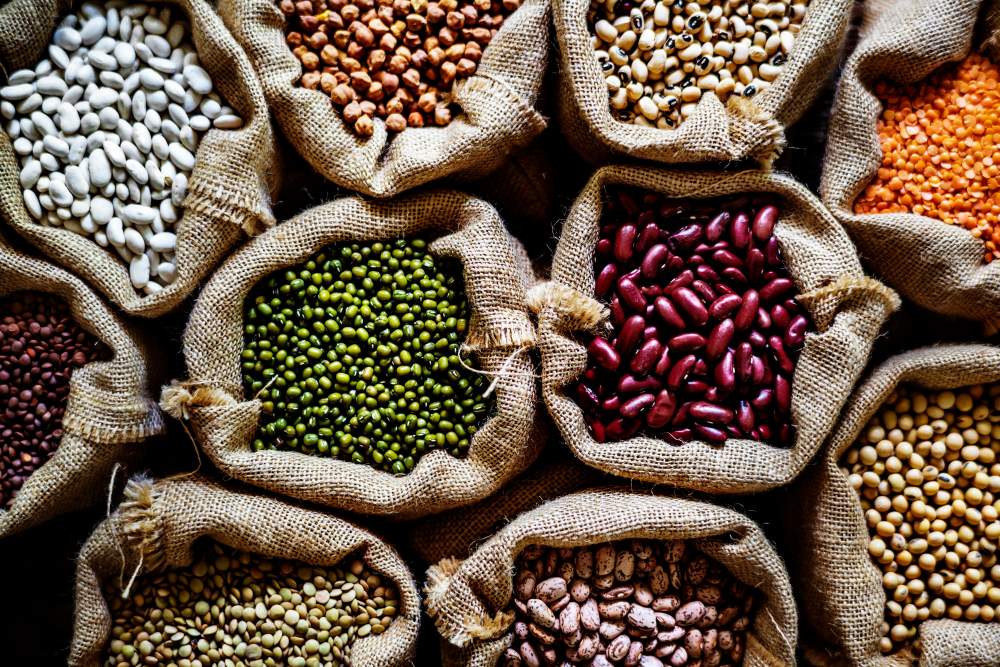Cover Crops – Enhancing Soil Health and Farming Sustainability
In the heartland of America’s agricultural fields, amidst the golden stretch of corn and the amber waves of grain, a quiet revolution is taking place beneath our feet. The unsung heroes of this revolution are not towering machines nor high-tech drones; they are, in fact, the humble cover crops nature’s tool for nurturing the land. These seemingly ordinary plants, sown during times when soil might otherwise lie fallow, are the silent guardians of our food supply, playing a pivotal role in sustainable farming. Their story is as rich as the soil they protect, and it’s time we uncover the layers of benefits they bestow upon the earth that feeds us.
Cover crops, a term once known only among agrarian circles has recently blossomed into the broader consciousness of environmentally conscious consumers and farmers alike. As a cornerstone of regenerative agriculture, these crops are not just a temporary placeholder for commercial plants; they are a strategic investment in the future of farming. From the nitrogen-fixing legumes to deep-rooted grasses, and from the nutrient-recycling brassicas to a plethora of other species, cover crops are as diverse as the reasons farmers plant them.
As we delve into the world of cover crops, we’ll explore how these plants are not merely a method for soil conservation but indeed a transformative practice with the potential to reshape the landscape of modern agriculture.
Through rigorous scientific scrutiny and farmer-led anecdotal evidence, the agricultural community has begun to sing praises of the many benefits cover crops offer from enhancing soil structure and fertility to managing pests and diseases, from reducing the need for chemical inputs to significantly improving yields.
This article aims to go beneath the surface, quite literally, to bring you a comprehensive understanding of cover crops and their multifaceted role in sustainable agriculture. Prepare to embark on a journey through time, from the ancient practices that first hinted at the benefits of cover cropping to the latest in scientific research and technological advancements aiding their management.
You’ll read about economic considerations, including cost-benefit analyses and government incentives, environmental impacts, such as climate change mitigation and biodiversity, as well as practical guidance for implementing these crops into modern farming systems.
So, whether you’re a seasoned farmer, an aspiring agronomist, or simply a curious reader interested in the nexus of agriculture and environmental stewardship, stay with us as we delve into the definitive guide to cover crops.
Join us in unraveling the green tapestry that could hold the key to resilient farming practices and a healthier planet. With detailed insights, case studies, and expert opinions, this article promises to sow seeds of knowledge and cultivate your understanding of one of agriculture’s most powerful tools.
As we peel back the layers of soil and time, we invite you to remain rooted in curiosity and geared for a deep dive into the world of cover crops. Let’s turn the page and begin the journey to greener fields and a more sustainable future for all who rely on the bounty of the earth.
Understanding Cover Crops
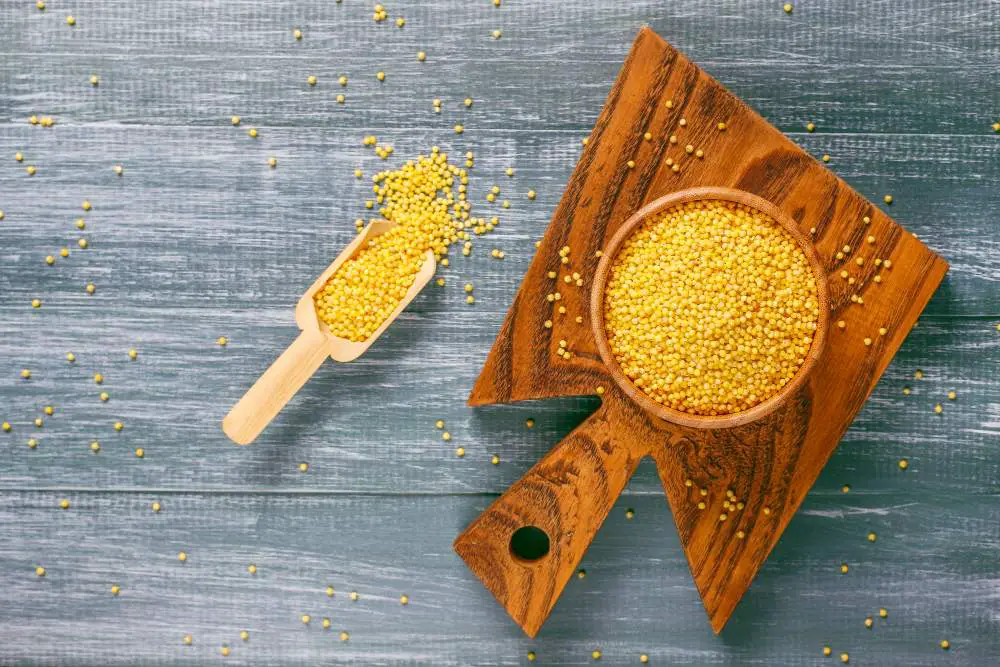
A. Historical Context
The tale of cover crops has been woven through the fabric of agriculture since its nascent days. Ancient civilizations, from the Greeks and Romans to the indigenous tribes of the Americas, practiced forms of cover cropping instinctively, although it wasn’t known by this term then. They recognized that certain plants could replenish the soil, although the scientific underpinnings were not understood. It wasn’t until the 1930s Dust Bowl that cover crops surged in their modern sense, as the US government began advocating for soil conservation techniques.
B. What are Cover Crops?
Cover crops are plants specifically sown to cover the soil rather than for harvest. They are integral to conservation agriculture, serving multiple purposes:
1. Types of Cover Crops:
Legumes: Such as clovers, vetch, and field peas, which fix atmospheric nitrogen, enriching the soil.
Grasses: Including rye, oats, and barley, known for their robust root systems that enhance soil structure and organic matter.
Brassicas: Like radishes and mustards, adept at breaking up compacted soil and suppressing soil-borne pests.
Broadleaf: Buckwheat and phacelia, attracting beneficial insects and improving biodiversity.
2. Common Species Characteristics:
Rye: Known for its quick germination and growth, effective weed suppression, and soil erosion control.
Crimson Clover: Prized for its nitrogen-fixing abilities and as a forage crop.
Oilseed Radish: Lauded for its deep taproots that can break up hardpans and recycle soil nutrients.
C. The Science Behind Cover Crops
Soil Biology and Structure:
Root Architecture: The root systems of cover crops are diverse, with some creating extensive networks that improve soil porosity and water infiltration.
Microbial Activity: Cover crop roots exude sugars and other substances that feed soil microorganisms, which in turn help decompose organic matter and release nutrients back into the soil.
Nutrient Cycling:
Nitrogen Fixation: Leguminous cover crops harbor symbiotic bacteria that convert atmospheric nitrogen into a form usable by plants.
Phosphorus and Potassium: Certain cover crops can scavenge these nutrients from the soil depths and release them closer to the surface for subsequent crops.
Biodiversity and Ecosystem Services:
Cover crops serve as habitat and food sources for a variety of organisms, from bacteria and fungi to insects and larger wildlife.
They contribute to the overall resilience of the agroecosystem by enhancing genetic diversity and providing ecosystem services such as pollination and natural pest control.
The Agronomic Benefits of Cover Crops

The agronomic benefits of cover crops are vast and varied, contributing significantly to the sustainability and productivity of agricultural systems. By improving soil health, managing pests, and aiding in moisture retention, cover crops are a cornerstone of innovative farming practices.
A. Soil Health and Fertility
1. Improvement of Soil Structure and Porosity:
Root Dynamics: The root systems of cover crops like ryegrass and daikon radishes create channels in the soil, which improve aeration and water infiltration.
Soil Aggregates: These plants help to form stable soil aggregates, which enhance the soil’s ability to retain nutrients and water.
Erosion Control: Cover crops, with their protective canopy and root mass, effectively reduce erosion by wind and water.
2. Enhancement of Soil Organic Matter:
Biomass Contribution: Decomposing cover crop residues adds organic matter to the soil, which is key for soil structure and fertility.
Humus Formation: This organic matter gradually turns into humus, the most stable part of soil organic matter, which can persist for years and provide long-term benefits.
3. Nitrogen Fixation and Nutrient Contributions:
Biological Nitrogen Fixation: Leguminous cover crops convert atmospheric nitrogen into ammonia, which can be used by subsequent crops, reducing the need for synthetic fertilizers.
Nutrient Recycling: Deep-rooted cover crops bring up subsoil nutrients to the upper soil layers where shallow-rooted cash crops can access them.
B. Pest and Disease Management
1. Suppression of Weeds Through Competition:
Light Blockage: The dense canopy of cover crops like cereal rye can block light from reaching the soil surface, thus suppressing weed germination and growth.
Allelopathic Effects: Certain cover crops release chemicals into the soil that can inhibit weed seed germination.
2. Breakage of Pest and Disease Cycles:
Physical Barriers: The presence of cover crops can physically impede the movement of pests.
Habitat for Beneficials: They can also increase the presence of beneficial insects and organisms that control pest populations.
3. Reduction of Soil Erosion and Water Runoff:
Surface Cover: Cover crops maintain a vegetative cover on soil, protecting it from rain impact and reducing surface runoff.
Root Mass: Their roots help to hold the soil in place, even after the above-ground parts have been terminated.
C. Moisture Management
1. Water Retention Benefits:
Soil Porosity: Increased porosity allows for better water infiltration and retention, providing a reservoir of moisture for crops.
Mulch Effect: Residues of cover crops can act as a mulch to reduce evaporation from the soil surface.
2. Influence on Soil Temperature and Evapotranspiration Rates:
Cooling Effect: Cover crops can lower soil temperature, reducing stress on subsequent crops during hot periods.
Water Cycle: They play a role in the local water cycle by transpiring water, which can affect local humidity levels and potentially benefit nearby crops.
D. Yield Impact
1. Case Studies Showing Yield Improvement Statistics:
Long-Term Studies: Evidence from long-term studies shows that the implementation of cover crops can lead to increased yields over time.
Short-Term Observations: While some studies suggest a neutral effect on yields in the short term, the long-term soil health benefits usually translate into improved crop performance.
2. Long-term Benefits vs. Short-term Gains:
Soil Resilience: Improved soil health can make the farming system more resilient to weather extremes, which is increasingly important with climate variability.
Economic Stability: The yield stability and potential for reduced input costs contribute to greater economic stability for farmers.
Economic Considerations
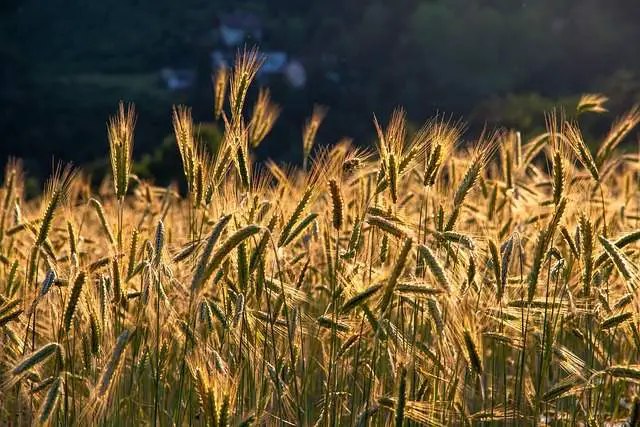
The adoption of cover crops is not only a decision grounded in environmental stewardship but also an economic strategy that can impact a farm’s bottom line. This section explores the cost implications, potential savings, and financial incentives associated with cover crops, providing a pragmatic view for farmers and stakeholders in the agricultural sector.
A. Cost-Benefit Analysis
1. Initial Investment:
Seed and Establishment Costs: The cost of cover crop seeds and the associated establishment practices can vary widely depending on the species chosen and the seeding method employed.
Equipment: Whether a farmer needs to purchase new equipment or can adapt existing machinery to plant and manage cover crops can significantly influence costs.
2. Maintenance and Termination Expenses:
Management: Ongoing management of cover crops may include irrigation and, in some cases, pest and disease control.
Termination: Methods of terminating cover crops, such as mowing, crimping, or herbicide application, come with varying costs and implications for the following cash crop.
3. Quantifying Soil Health Improvements:
Fertility Enhancement: Improved soil health can reduce the need for fertilizers over time, a saving that needs to be factored into economic models.
Erosion Prevention: By reducing soil erosion, cover crops prevent the loss of valuable topsoil and the associated nutrients.
B. Yield Impacts and Long-Term Economic Benefits
1. Short-Term Yield Variations:
Some farmers may experience a short-term reduction in cash crop yields immediately following cover crop establishment, particularly if they are learning to manage them efficiently.
2. Long-Term Yield Benefits:
Improved Soil Structure: Enhanced soil structure can lead to better root development for cash crops and potentially higher yields.
Resilience to Weather Extremes: Soils with good health can buffer crops against drought and excessive rainfall, leading to more stable yields.
3. Cost Savings:
Reduction in Fertilizer Use: The ability of leguminous cover crops to fix nitrogen can translate into lower fertilizer costs.
Pest and Weed Control: Natural suppression of pests and weeds by cover crops may reduce the need for chemical inputs.
C. Government Incentives and Subsidies
1. Conservation Programs:
Programs like the Environmental Quality Incentives Program (EQIP) in the United States offer financial assistance to farmers implementing conservation practices, including cover crops.
2. Insurance Premium Benefits:
In some regions, the use of cover crops can qualify farmers for reduced insurance premiums through programs aimed at encouraging sustainable agricultural practices.
3. Carbon Credits and Trading:
With the increasing importance of carbon sequestration, farmers may be able to receive carbon credits for the carbon captured by their cover crops, which they can sell on carbon markets.
D. Economic Considerations for Different Farm Sizes and Types
1. Scale Economies:
Larger farms may realize economies of scale with cover crops, potentially seeing greater cost-efficiency in their operations.
2. Diversification and Market Opportunities:
Alternative Markets: Some cover crops can provide secondary income streams if they can be harvested for grain, forage, or seed.
Specialty Markets: There is growing consumer demand for products produced with sustainable practices, which can command premium prices.
E. Risk Management and Market Volatility
1. Buffer Against Market Fluctuations:
By improving the resilience of the soil and crop yields, cover crops can act as a buffer against market volatility and price fluctuations for primary crops.
2. Insurance Against Climatic Risks:
Cover crops can be seen as an “insurance policy” against the increasing risks of climate change, such as drought and extreme rainfall events.
Cover Crops and Environmental Sustainability

The integration of cover crops into agricultural systems is not just an agronomic practice; it’s a significant stride toward environmental sustainability. This section examines the ecological footprint of cover cropping and its role in promoting a more sustainable future for our planet.
A. Enhancing Biodiversity
1. Aboveground Diversity:
Flora: Cover crops contribute to plant diversity within agricultural landscapes, providing various benefits such as habitat and forage for pollinators and other wildlife.
Fauna: The presence of diverse plant species supports a wider range of insects, birds, and mammals by offering different types of shelter and food sources.
2. Belowground Diversity:
Soil Organisms: A rich tapestry of microbial life, including bacteria, fungi, and nematodes, thrives in the rhizosphere of cover crops, promoting nutrient cycling and soil structure.
B. Soil Conservation and Climate Change Mitigation
1. Carbon Sequestration:
Organic Carbon Storage: By enhancing soil organic matter, cover crops act as carbon sinks, sequestering atmospheric CO2, a critical factor in mitigating climate change.
Reduced Emissions: Cover crops can lead to lower emissions of nitrous oxide by improving nitrogen use efficiency and reducing the need for synthetic fertilizers.
2. Soil Erosion Reduction:
Wind and Water Erosion: The physical presence of cover crops reduces the impact of raindrops on the soil and shields the soil from winds, thus preventing erosion.
C. Water Quality and Conservation
1. Nutrient Management:
Reduced Nutrient Runoff: Cover crops absorb excess nutrients, particularly nitrogen and phosphorus, which might otherwise leach into waterways, contributing to eutrophication.
Phytoremediation: Certain species can take up and store contaminants, reducing their prevalence in the soil and water.
2. Hydrological Benefits:
Water Infiltration: Enhanced soil structure allows for better water infiltration, reducing surface runoff and the potential for flooding.
Evapotranspiration: Cover crops contribute to the water cycle through transpiration, which can have local climate benefits.
D. Pesticide Reduction and Pollinator Support
1. Pesticide Use:
Biological Control: By providing a habitat for beneficial insects and predators, cover crops can help reduce the need for chemical pesticides.
Disease Suppression: They also suppress soil-borne pathogens, further diminishing the reliance on fungicides and other soil treatments.
2. Support for Pollinators:
Food Sources: Flowering cover crops offer critical resources for pollinators, including nectar and pollen.
Habitat Continuity: They provide pollinators with habitat during times when other food sources are scarce, especially in large monoculture landscapes.
E. Adapting to Climate Change
1. Resilience Building:
Extreme Weather: The improved soil health and structure afforded by cover crops help farms withstand extreme weather conditions, from drought to heavy rains.
Temperature Modulation: The canopy of cover crops can moderate soil temperature extremes, protecting microorganisms and plant roots.
2. Mitigation Strategies:
Carbon Footprint: The overall reduction in input requirements for fertilizers and pesticides translates into a lower carbon footprint for farming operations.
F. Policy and Collaborative Efforts
1. Agricultural Policy:
Sustainable Programs: Government policies increasingly recognize the benefits of cover crops, as evidenced by subsidies and support for sustainable practices.
International Agreements: Cover crops are integral to fulfilling international environmental agreements focused on agricultural sustainability and carbon reduction.
2. Farmer Collaboration:
Knowledge Exchange: Farmer-to-farmer networks and cooperative extensions play a vital role in sharing best practices for cover crop utilization.
Community Resilience: Collectively, these practices can enhance the environmental and economic resilience of rural communities.
Implementation Strategies for Cover Cropping
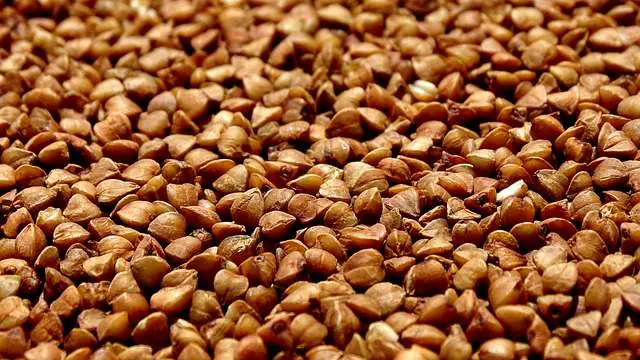
Transitioning to a farming system that includes cover crops is a strategic process that requires careful planning, consideration of farm-specific variables, and an understanding of how to maximize their benefits while minimizing challenges. This section lays out comprehensive strategies for farmers to effectively implement cover cropping practices in their operations.
A. Selecting the Right Cover Crop Species
1. Assessment of Farm Goals:
Determining objectives such as soil improvement, erosion control, weed suppression, or pest management.
Understanding the climatic and soil conditions of the farm to select appropriate species.
2. Cover Crop Characteristics:
Growth Habit: Consideration of root structure (deep vs. shallow) for soil penetration and aeration.
Biomass Production: High biomass crops for maximum soil cover and organic matter input.
Nitrogen Fixing vs. Scavenging: Deciding between legumes for nitrogen fixation or non-legumes to capture residual soil nitrogen.
B. Timing and Method of Seeding
1. Window of Opportunity:
Determining the best time to plant cover crops based on the geographic region, climate patterns, and cropping system.
2. Seeding Techniques:
Drilling vs. Broadcasting: Benefits and limitations of different seeding methods.
Overseeding into Standing Crops: Opportunities for inter-seeding cover crops into cash crops before harvest.
C. Managing Cover Crops throughout the Season
1. Growth Monitoring:
Regular field inspections to assess cover crop growth, health, and potential issues such as pest infestations or disease.
2. Irrigation and Fertility Management:
Balancing water requirements without compromising cash crops.
Fertilization needs for cover crops, if any, depending on the farm’s fertility management plan.
D. Termination and Incorporation
1. Termination Strategies:
Crimping: Rolling cover crops to create a weed-suppressive mat.
Mowing or Grazing: Using livestock to terminate and recycle nutrients back into the soil.
Chemical Termination: Judicious use of herbicides for termination when necessary.
2. Soil Incorporation Techniques:
Deciding on tillage methods or the use of no-till practices to manage cover crop residues before planting the main crop.
E. Integrating Cover Crops with Main Crops
1. Crop Rotation Planning:
Designing rotations that include cover crops to break pest and disease cycles and improve soil health.
2. Relay Planting and Living Mulches:
Utilizing cover crops as living mulches for cash crops, providing continuous soil cover.
F. Monitoring and Adapting the Approach
1. Soil Health and Crop Performance Metrics:
Establishing baselines and monitoring changes in soil health indicators, water usage, and crop yields to evaluate the impact of cover crops.
2. Economic Analysis:
Conducting partial budgeting to assess the economic impact of incorporating cover crops and making adjustments accordingly.
G. Leveraging Technology and Resources
1. Precision Agriculture:
Utilizing GPS and variable rate technology to optimize seeding rates and patterns.
2. Expert Guidance and Support:
Engaging with local agricultural extension services, conservation districts, and experienced cover crop consultants for tailored advice.
H. Community and Agroecosystem Impact
1. Farmer-to-Farmer Networks:
Participating in local or online farmer networks to share experiences and strategies.
2. Research Contributions:
Collaborating with research institutions to contribute to the broader understanding of cover cropping impacts and benefits.
Challenges and Management in Cover Cropping

Implementing cover crops is a proactive step toward sustainable agriculture, but it is not without its challenges. This section delves into the common obstacles farmers may face with cover cropping and provides management strategies to address these issues.
A. Establishment Challenges
1. Seed Germination and Growth:
Problem: Poor germination due to incorrect seeding depth, soil compaction, or inadequate moisture.
Management: Use of precision seeding technology, proper timing to coincide with rainfall, and pre-planting irrigation strategies.
2. Competition with Cash Crops:
Problem: Cover crops outcompeting main crops for light, nutrients, or water.
Management: Careful selection of cover crop species with complementary growth patterns and resource needs to the cash crop.
B. Termination Difficulties
1. Timing Issues:
Problem: Delayed or ineffective termination can lead to cover crops becoming weeds.
Management: Use of roller-crimpers or timely application of appropriate herbicides, coupled with monitoring of growth stages for optimal termination.
2. Residue Management:
Problem: Excessive biomass can hinder planting operations and the early growth of subsequent crops.
Management: Adoption of no-till drills that can handle high residue situations, and strategic mowing or grazing to reduce biomass.
C. Economic Hurdles
1. Initial Costs:
Problem: The cost of seeds and additional labor can be a deterrent.
Management: Utilizing government subsidies, cost-share programs, and long-term economic evaluations that factor in the cost savings from reduced inputs and improved yields.
2. Market Limitations:
Problem: Lack of markets for cover crop seed or forage can limit the economic incentives.
Management: Exploration of niche markets, value-added products, or use of cover crops as forage to create additional revenue streams.
D. Knowledge and Experience Gaps
1. Understanding Cover Crop Systems:
Problem: Inadequate knowledge about cover crop species and their management can lead to suboptimal results.
Management: Engagement with agricultural extension program, cover crop field days, and workshops to enhance understanding and skills.
2. Tailoring to Specific Conditions:
Problem: One-size-fits-all approaches to cover cropping often fail due to variable farm conditions.
Management: On-farm trials and cooperation with local research stations to find the best fit for specific conditions.
E. Environmental and Ecological Considerations
1. Water Use:
Problem: In arid regions, cover crops can consume valuable soil moisture needed by cash crops.
Management: Selection of drought-tolerant species and moisture-conserving planting techniques.
2. Pest and Disease Pressures:
Problem: Some cover crops may harbor pests and diseases that affect subsequent crops.
Management: Rotating cover crop species and using integrated pest management (IPM) strategies to minimize risks.
F. Technical and Machinery Limitations
1. Equipment Availability:
Problem: Specialized equipment for seeding or termination may be required but is not always available.
Management: Custom hiring, shared machinery pools among farmers, or modification of existing equipment.
2. Technology Adoption:
Problem: High upfront costs and learning curves associated with precision agriculture technologies.
Management: Gradual adoption, leasing options, and seeking advice from early adopters or tech-savvy agronomists.
G. Policy and Regulatory Barriers
1. Incentive Structures:
Problem: Insufficient governmental or institutional support can hinder widespread adoption.
Management: Advocacy for policy change, participation in pilot projects, and utilization of existing conservation programs.
2. Certification and Compliance:
Problem: Meeting the requirements for organic certification or other eco-labels can be complex.
Management: Detailed record-keeping, proactive communication with certifiers, and adherence to best practices.
Case Studies and Success Stories in Cover Cropping
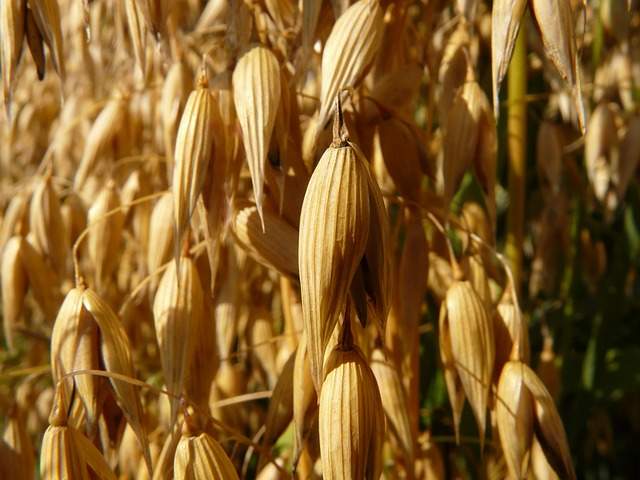
The real-world impact of cover crops can best be understood through case studies and success stories from farmers who have integrated these practices into their agricultural systems. This section will highlight various instances where cover crops have been successfully implemented, detailing the approaches taken, outcomes achieved, and the lessons learned from these experiences.
A. Midwestern Corn-Soybean Rotations
1. Case Study: A cooperative project in Iowa demonstrated the benefits of cereal rye as a cover crop in a typical corn-soybean rotation.
Approach: Farmers seeded cereal rye before soybean harvest and terminated it before corn planting.
Outcomes: They observed reduced nitrate leaching, improved soil structure, and no yield penalty for the following cash crops.
Lesson: Early seeding and termination of cover crops can fit into tight Midwest crop rotations, enhancing environmental benefits without harming productivity.
B. California Diverse Vegetable Farms
1. Case Study: Small-scale vegetable producers in California utilized cover crops as part of an organic farming system.
Approach: Multispecies cover crops were planted during fallow periods to enhance soil fertility and manage pests.
Outcomes: Increased organic matter, enhanced biodiversity, natural pest suppression, and higher vegetable yields.
Lesson: Diverse cover crops can play a crucial role in organic systems, contributing to both soil health and ecological balance.
C. Southern Plains Cotton Fields
1. Case Study: Cotton producers in Texas adopted cover crops to address severe erosion and soil degradation issues.
Approach: They planted legume-based cover crops post-harvest and used reduced-tillage systems.
Outcomes: There was a significant reduction in soil erosion, increased water infiltration, and improved nutrient cycling.
Lesson: In erosion-prone areas, cover crops combined with reduced tillage can stabilize soils and improve long-term productivity.
D. Southeastern Mixed Livestock and Crop Operations
1. Case Study: A farm in Georgia integrated cover crops into a rotation that included livestock grazing.
Approach: Cover crops were grazed in the winter, eliminating the need for winter feed and providing natural fertilization.
Outcomes: This resulted in lower feed costs, improved animal health, and maintained soil coverage year-round.
Lesson: Cover crops can be an economically viable solution for integrating crop and livestock systems, reducing inputs, and improving profitability.
E. Northern Small Grains Farms
1. Case Study: Wheat farmers in the upper Midwest used cover crops to break up disease cycles and reduce weed pressure.
Approach: They implemented a rotation of small grains with cover crops like oilseed radish and clover.
Outcomes: There was a decrease in disease incidence, suppression of resistant weed species, and improved soil fertility.
Lesson: Cover crops can be effectively used to manage pests and diseases in small-grain systems, promoting healthier crops and reducing the need for chemical inputs.
F. International Examples
1. Case Study: In Brazil, the adoption of cover crops is part of the larger no-till farming revolution.
Approach: Farmers use cover crops to protect the soil during the rainy season and improve organic matter.
Outcomes: Reduced soil erosion, enhanced biodiversity, and increased crop yields.
Lesson: Cover crops are a key component of sustainable no-till farming practices on a large scale, with significant environmental and economic benefits.
G. Collaborative Research Initiatives
1. Case Study: Multi-stakeholder research efforts, such as the Living Mulch Project in Europe, demonstrate the collaborative approach to cover crop success.
Approach: Trials of living mulches were conducted alongside cash crops to assess impacts on yield and ecosystem services.
Outcomes: Findings showed that with careful management, living mulches could provide ecological benefits without compromising cash crop yields.
Lesson: Collaborative research can lead to optimized management strategies that serve both farmers’ needs and environmental goals.
Resources for Farmers and Agronomists on Cover Cropping
Adopting cover crops is a knowledge-intensive process. To ensure success, farmers and agronomists must have access to robust information and resources. This section is a comprehensive guide to various tools, networks, and platforms dedicated to aiding those who seek to enhance their cover cropping systems.
A. Extension Services and Local Universities
1. Cooperative Extension System:
What they offer: Personalized advice, workshops, and soil testing services.
How to engage: Contact local extension agents or attend university-sponsored agricultural events.
2. Land-Grant Universities:
What they offer: Research-based information, field trials, and educational programs.
How to engage: Participate in local university research, access online databases, and join collaborative field experiments.
B. Government and Non-Profit Organizations
1. Natural Resources Conservation Service (NRCS):
What they offer: Technical guides, conservation planning, and financial programs like EQIP (Environmental Quality Incentives Program).
How to engage: Visit local NRCS offices or explore their online resources for cover crop funding opportunities and technical support.
2. Non-Profit Organizations:
What they offer: Networking opportunities, funding for sustainable practices, and access to a community of practice.
How to engage: Join organizations like the Sustainable Agriculture Research and Education (SARE) program or the National Center for Appropriate Technology (NCAT).
C. Digital Tools and Applications
1. Cover Crop Decision Tools:
What they offer: Help in selecting the right cover crop species based on regional climate, soil conditions, and cropping systems.
How to engage: Use tools like the Midwest Cover Crops Council (MCCC) Selector Tool or the Cover Crop Chart from USDA-ARS.
2. Soil Health Assessment Apps:
What they offer: Mobile applications for monitoring soil health indicators and impacts of cover cropping.
How to engage: Download apps like SoilWeb or GLOBE Observer for soil health analysis.
D. Online Forums and Information Hubs
1. Agronomy Journals and Publications:
What they offer: Peer-reviewed research articles, extension publications, and case studies on cover crops.
How to engage: Access digital libraries, and subscribe to journals like “Agronomy for Sustainable Development” or “Journal of Soil and Water Conservation”.
2. Online Farming Communities:
What they offer: Platforms to exchange knowledge, experiences, and strategies with fellow farmers and experts.
How to engage: Participate in online forums such as AgTalk, The Cover Crop Innovators Group, or the Farming Forum.
E. Workshops, Webinars, and Field Days
1. Interactive Learning Events:
What they offer: Hands-on experience and direct interaction with cover crop experts and experienced farmers.
How to engage: Look for announcements on cover crop field days, webinars, and workshops by agricultural organizations and universities.
F. Books and Comprehensive Guides
1. In-Depth Literature:
What they offer: Detailed information on the principles, benefits, and challenges of cover cropping.
How to engage: Read seminal works like “Managing Cover Crops Profitably” published by SARE or “The Cover Crop Guide” by ATTRA.
G. Industry Conferences and Trade Shows
1. Professional Gatherings:
What they offer: Opportunities to learn about the latest cover crop products, equipment, and research findings.
How to engage: Attend events like the Commodity Classic or the American Society of Agronomy conferences.
H. Customized Advisory Services
1. Consulting Firms and Agronomists:
What they offer: Tailored recommendations and ongoing support for your specific cover cropping system.
How to engage: Hire a professional agronomy consulting service or a certified crop adviser (CCA).
Final Thoughts

As we have journeyed through the multifaceted world of cover crops, it’s evident that their role extends far beyond the simple act of planting an off-season crop. From enhancing soil health to addressing global challenges of sustainability, cover crops are a vital component of a forward-thinking agricultural paradigm. In wrapping up this comprehensive exploration, let’s distill the essence of what we’ve learned and look toward the future of cover cropping.
Synthesis of Key Takeaways
1. Cover Crop Fundamentals: Understanding the basic principles of cover cropping is foundational for integrating them into farming systems. They are not a one-size-fits-all solution but a complex, adaptable tool for modern agriculture.
2. Agronomic Benefits: The compelling advantages of cover crops span from soil structure enhancement and fertility improvement to pest and weed management, emphasizing their integral role in farm management strategies.
3. Economic Considerations: While the initial investment and learning curve can be challenging, the long-term financial benefits, including input cost reductions and potential yield increases, make cover crops a wise economic choice.
4. Environmental Impact: Cover crops stand out as environmental stewards, reducing erosion, improving water quality, and increasing biodiversity, aligning farming with ecological conservation efforts.
5. Implementation Strategies: Successful integration of cover crops requires careful planning, from species selection to termination methods. This tailored approach ensures compatibility with existing agricultural practices.
6. Overcoming Challenges: Addressing barriers such as establishment costs, knowledge gaps, and climate considerations is essential for the widespread adoption of cover crops.
7. Success Stories: Case studies demonstrate the real-world efficacy of cover crops across diverse agricultural settings, offering inspiration and practical lessons for prospective adopters.
8. Resource Accessibility: An abundance of resources from extension services to digital tools supports farmers and agronomists in implementing cover crops, underscoring the importance of knowledge exchange and community support.
The Road Ahead
The future of cover cropping is bright and brimming with innovation. We anticipate advancements in breeding cover crop varieties tailored to specific climatic and soil conditions, greater accessibility to high-quality seeds, and technological interventions for precise management.
Farmers, agronomists, and stakeholders are encouraged to engage with the rich tapestry of resources available, participate in ongoing dialogue, and contribute to the ever-evolving body of research on cover crops. It is through collective action and shared learning that cover crops will continue to flourish and expand.

